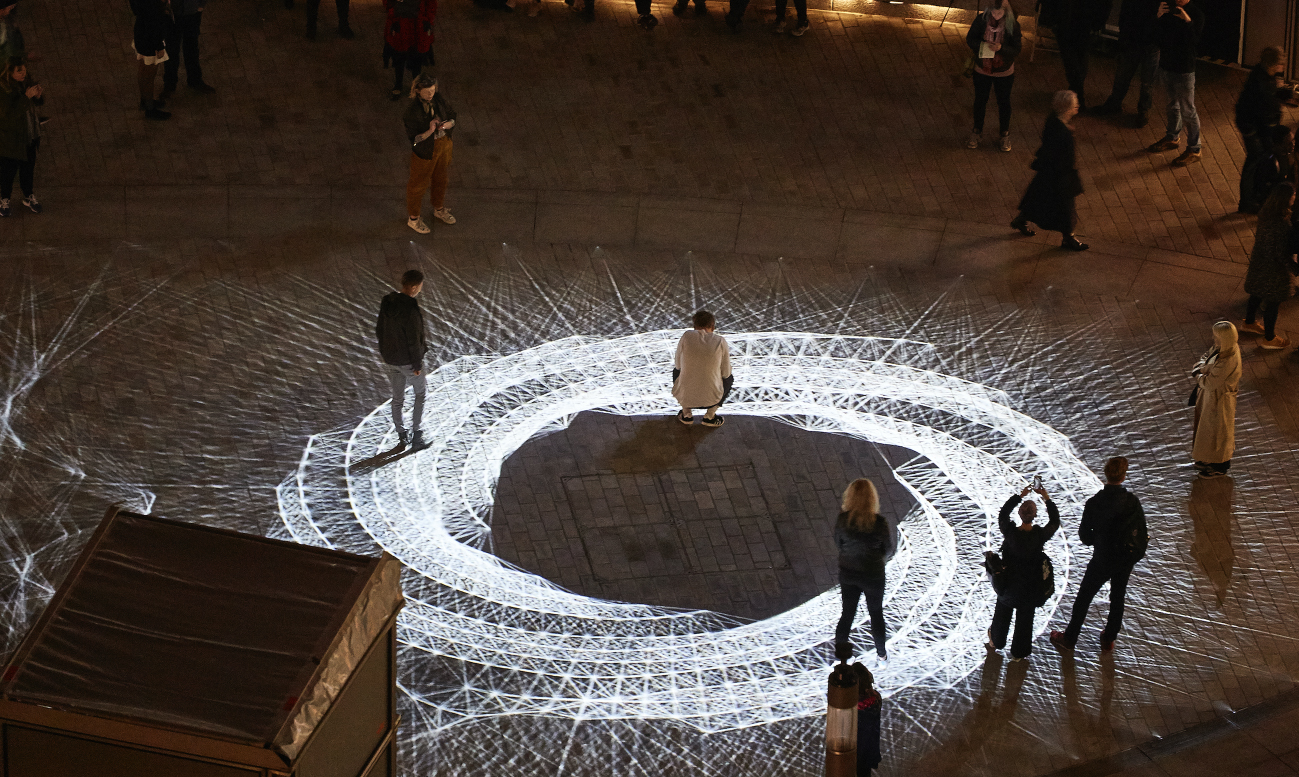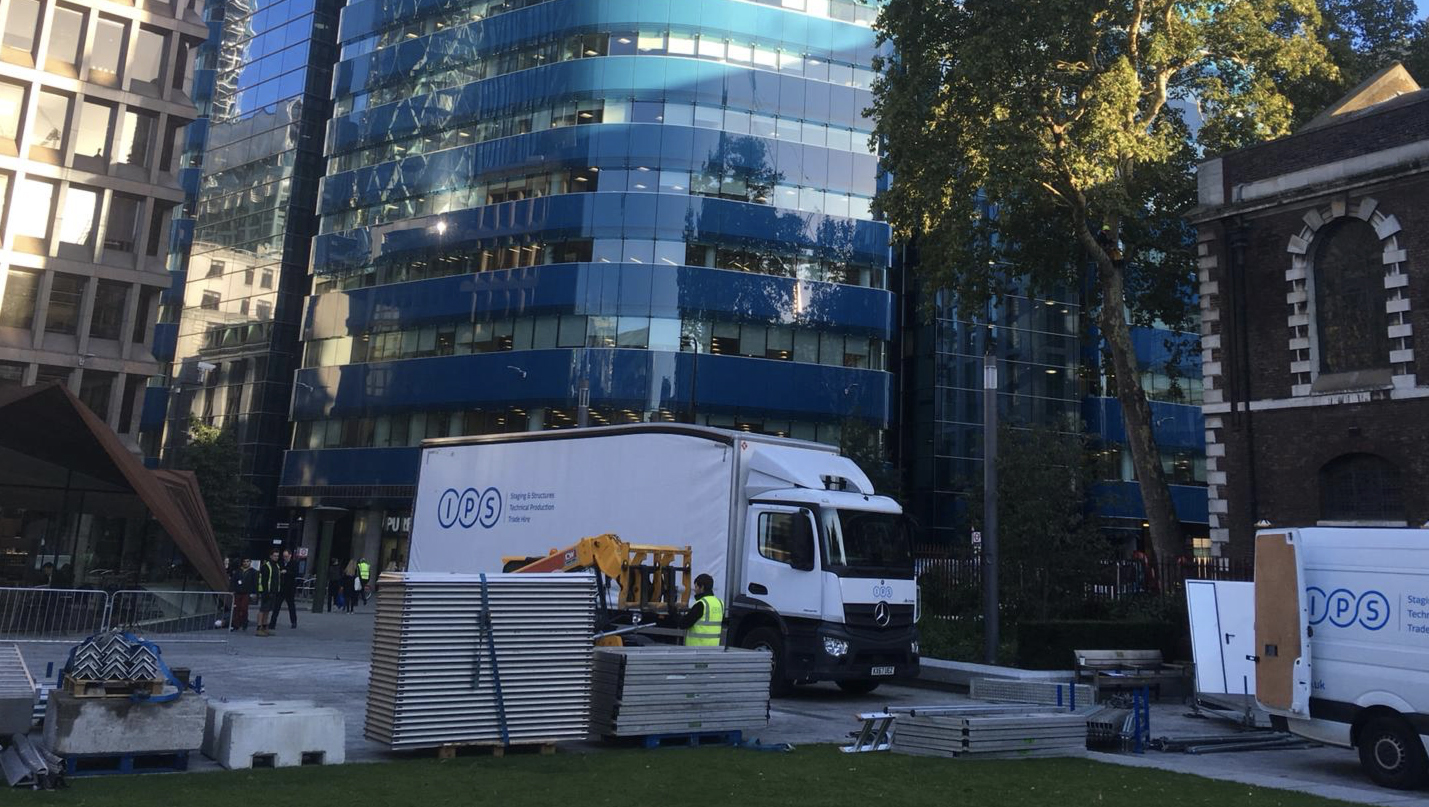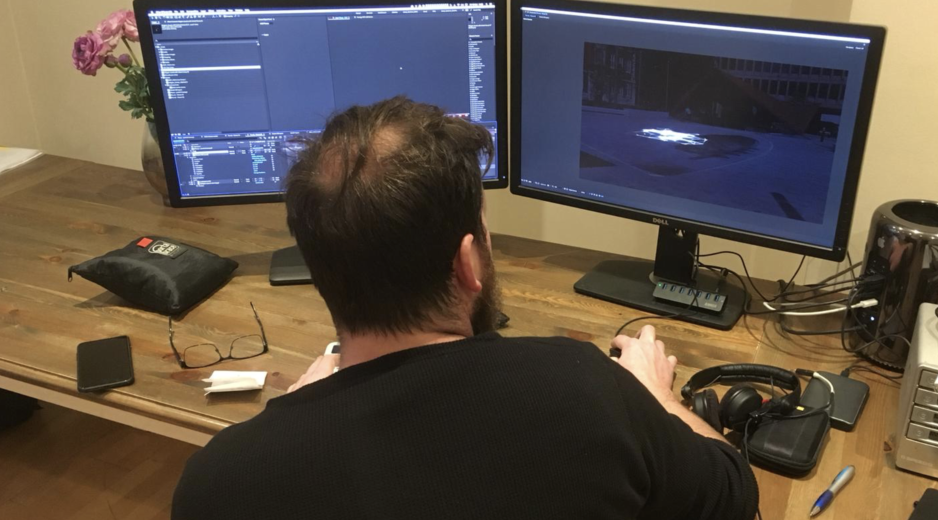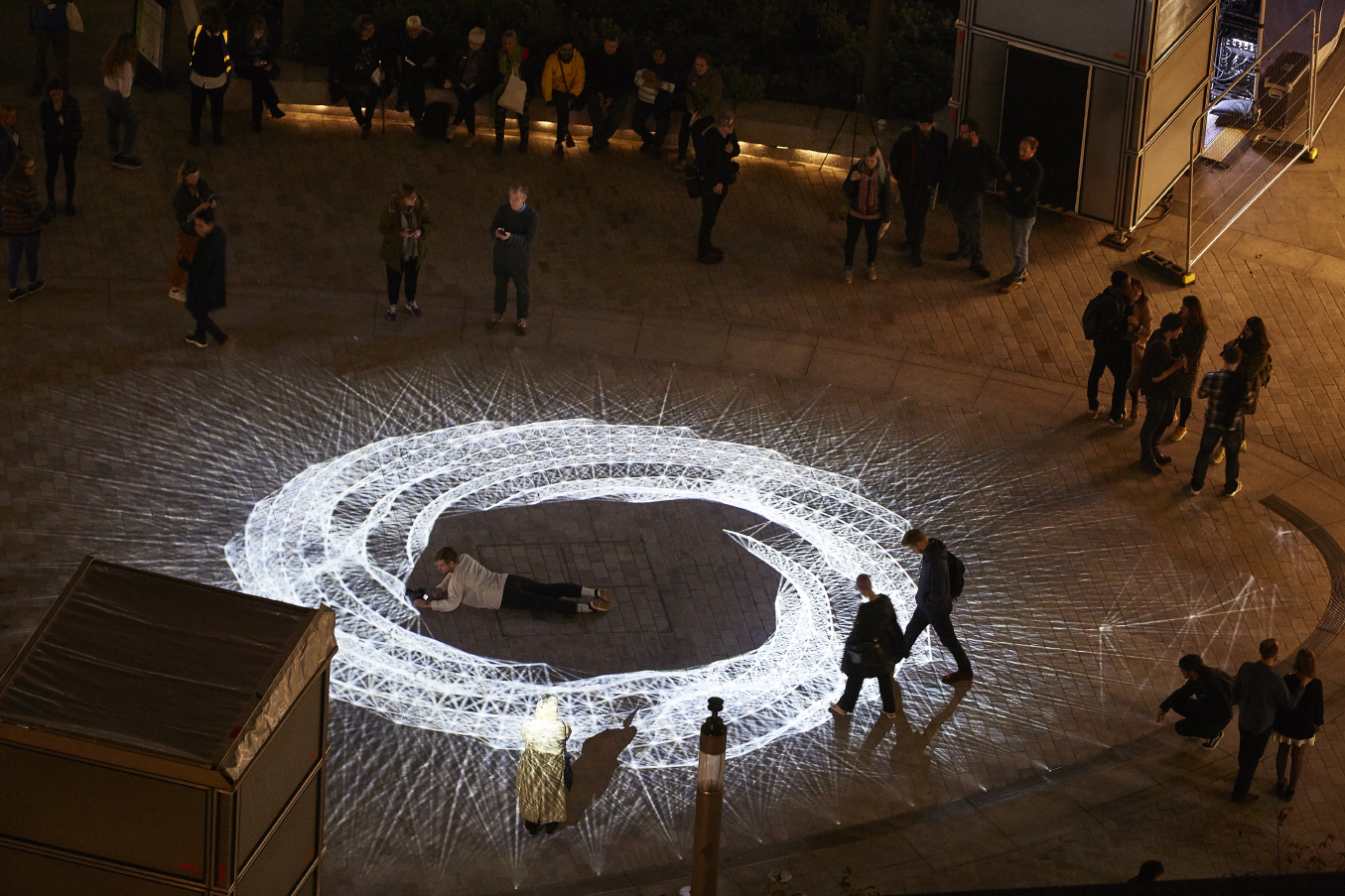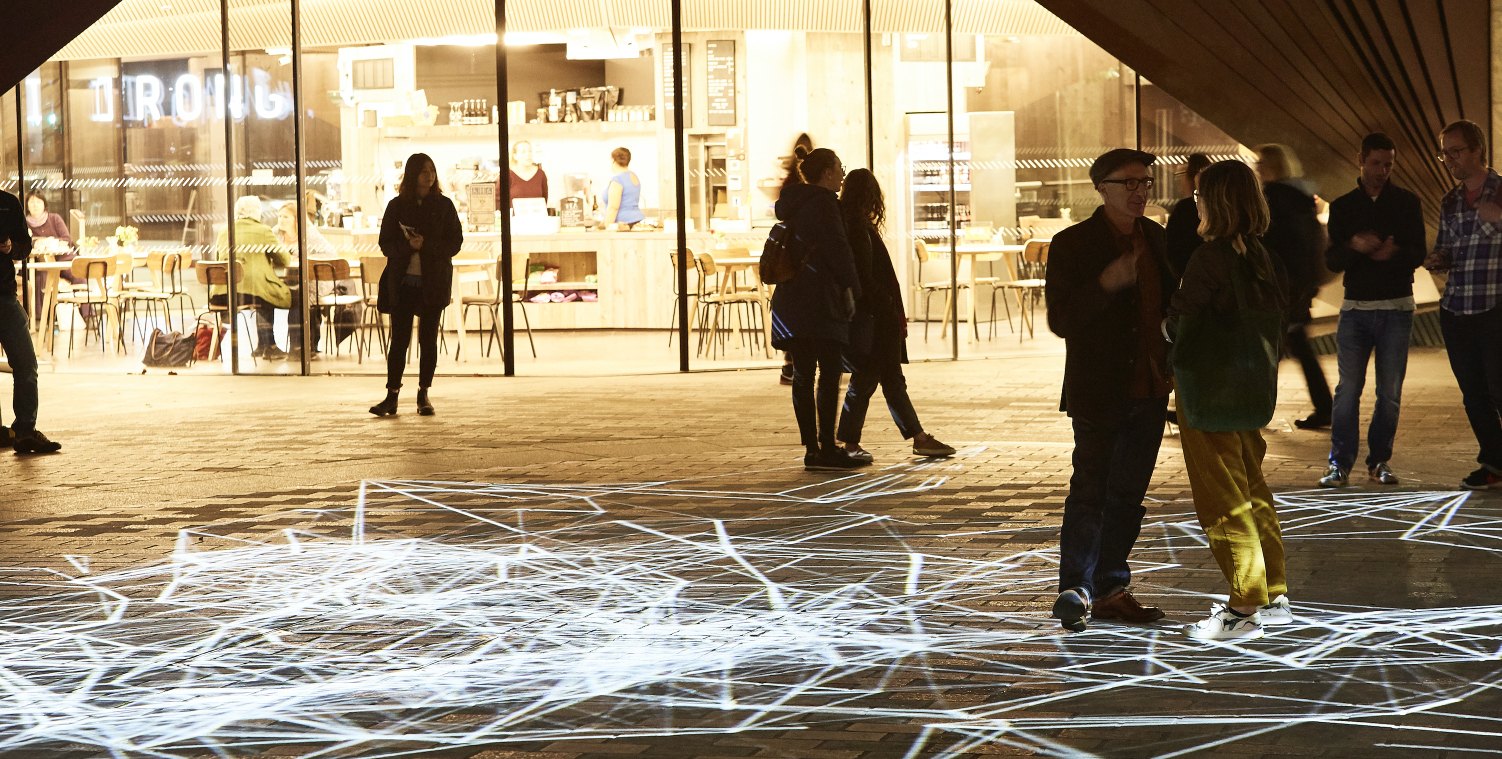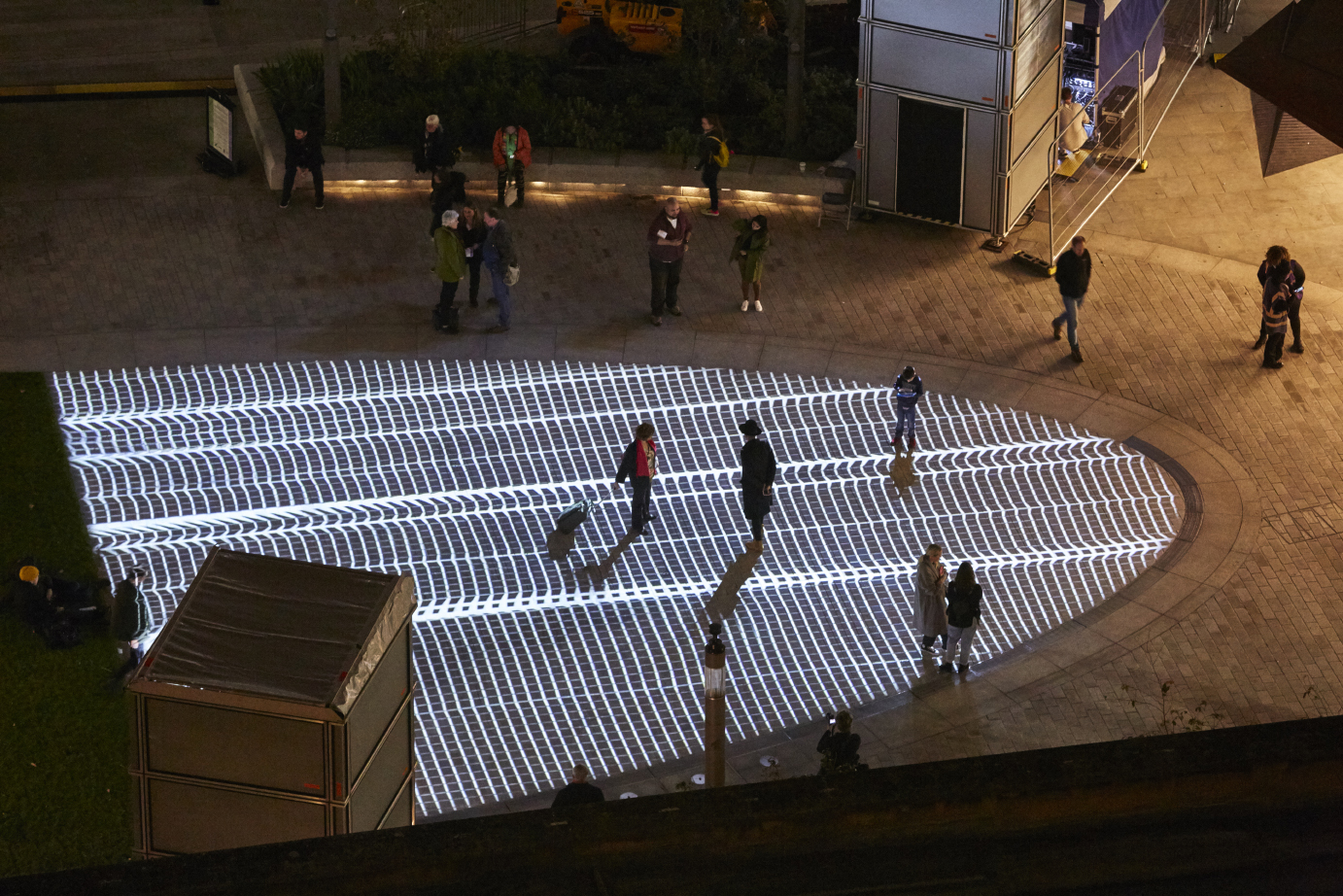


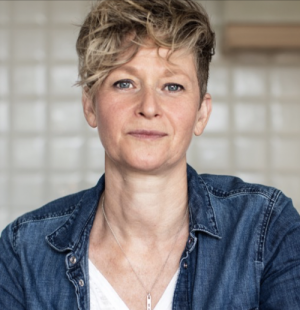
Introduce yourself
Amanda Bluglass, Lead Artist of Hidden Voices, PROCESSIONS in the City. I am a multimedia artist working in the field of sound recording and digital art
What is your role within Artichoke?
As part of The Media Workshop, we were commissioned by Artichoke and the City of London Corporation to develop a unique, spatialised audio visual installation around the themes of women, work and power. This immersive installation, called Hidden Voices, PROCESSIONS in the City, took place on 20th October, 2018.
My role initially involved working alongside Artichoke to research and gather audio materials relating to the theme of women, work and power in the Aldgate and East End areas. My audio sources included archive oral histories and contemporary recordings. The visuals were developed collaboratively with The Media Workshop team once the audio piece had taken shape, and consisted of sound-responsive digital ‘threads’, creating projected matrices of light.
What is Hidden Voices, PROCESSIONS in the City?
Hidden Voices: PROCESSIONS in the City was a sound and light installation, presented by Artichoke and the City of London Corporation. Created from recorded interviews with key women from the Aldgate community along with historical tapes of women across the last century, this was an event in the City of London’s Women, Work and Power season. The immersive artwork we created explored the history of women in the area, their strength, contribution to social change and how they have supported and continue to support one another through adversity.
How are technicians key to the creation/ delivery of Hidden Voices, PROCESSIONS in the City?
As a digital artist, my chosen medium exists within the sphere of technology. The creative process is very collaborative, working alongside extremely skilled artist-technicians who intimately understand digital technology. I think because of my age and training I have a good working insight of all sorts of processes but not necessarily the very specialised skills shared by my colleagues. Although I often might be the lead in a creative sense, I always work with technicians and artists to translate those ideas into reality. In my specific digital art practice I have a working knowledge of the technologies used but I always work with people with specialist talents who contribute to and facilitate the delivery of that art.
What are the technical elements of Hidden Voices: PROCESSIONS in the City? / what couldn’t be achieved without the work of the technical team?
We have collaborated with various technicians on this project whether audio, video artists as well as and construction technicians, from companies such as Unusual and QED. The technicians realise our creative ideas, expressed through audio and visual elements. They are vital in solving the challenges of optimising the audience experience in an outdoor, public, space.
There were physical technological elements to this artwork; built structures upon which projection kit was placed, speakers that distributed sound around the Square, cabling that connected the speakers to the mixing desk, computer and power. Then there was the content itself: audio digital recordings of voices, both historical and contemporary. Some existed as archival digital files, others were recorded in the Square itself. They combined voices with ambient environmental sounds. These were curated by sound artist Chris Perry, using Logic software to create key channels of audio which ran over a bed of sounds recorded from the Square. We pulled out resonant frequencies which were played back into the space, re-tuning and re-toning across 12 speakers so it circulated around the square, so that the voices moved, drifting around and past the audience. The audio composition was combined with flowing, sound-responsive digitally-projected visuals, designed by Tim Dollimore, creating matrices of light across the ground, creating webs of connectivity.
How are technicians key to Art in your opinion?
My artwork could not exist without collaborating with all kinds of technicians who are characterised by having particular ways of thinking and problem solving. They are creatives in their own right and, importantly, creative in a way that I am not. I have an intuitive way of working, so I might see, hear and dream what I want to create but it’s only with the help of other expert individuals that those ideas can become tangible pieces of digital art.
What is it like being a woman in a technical environment?
Working in the field of digital art is a very male dominated there’s no question about it. It’s quite rare to have an all-woman team and rare to work with editors and camera operatives who are women, although that is changing slowly. I feel it’s really difficult for women to make headway in digital art, as practitioners and as technicians.
I think it’s really important that we encourage open learning and experimentation to challenge this. We should make sure that people aren’t afraid to ask for information and help. I take every day as a “school day”, if I don’t know what a plug is, I’ll ask, if I don’t know what a piece of technology does, I’ll ask, if I don’t understand an acronym, I’ll ask. There are lots of elements of technical roles that can seem inaccessible and daunting but they’re not. Anything can be learnt if it’s explained in the right way.
